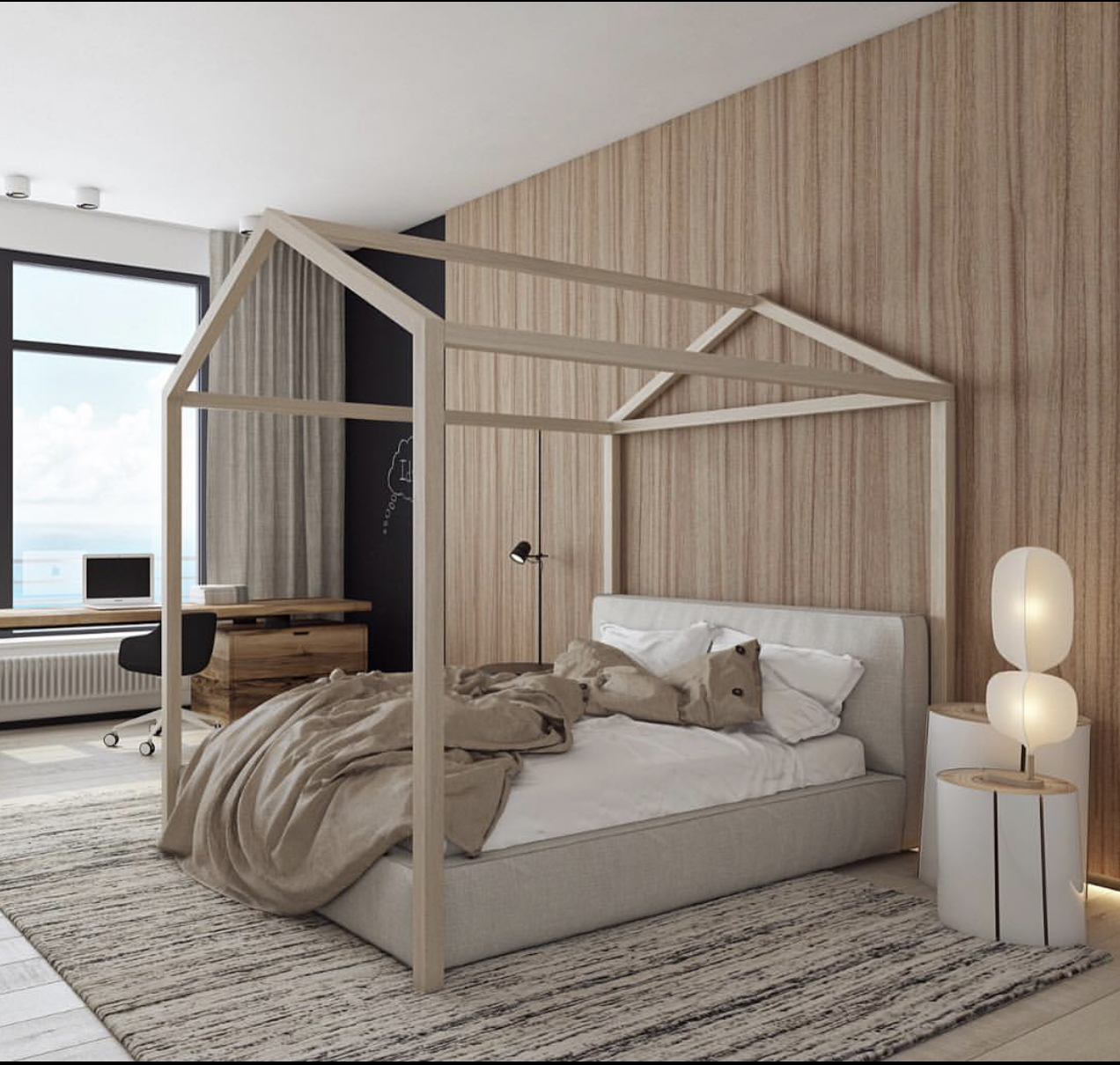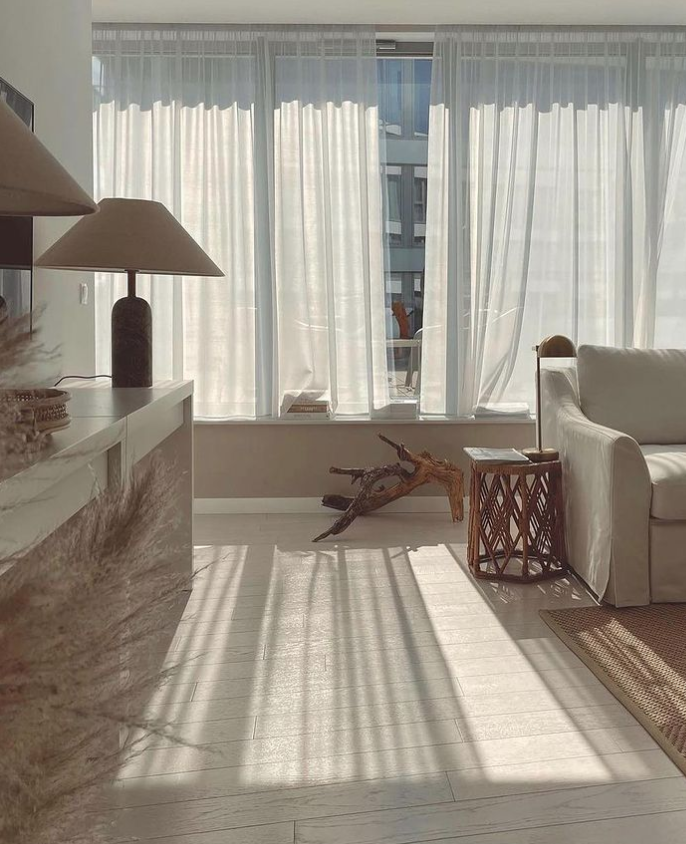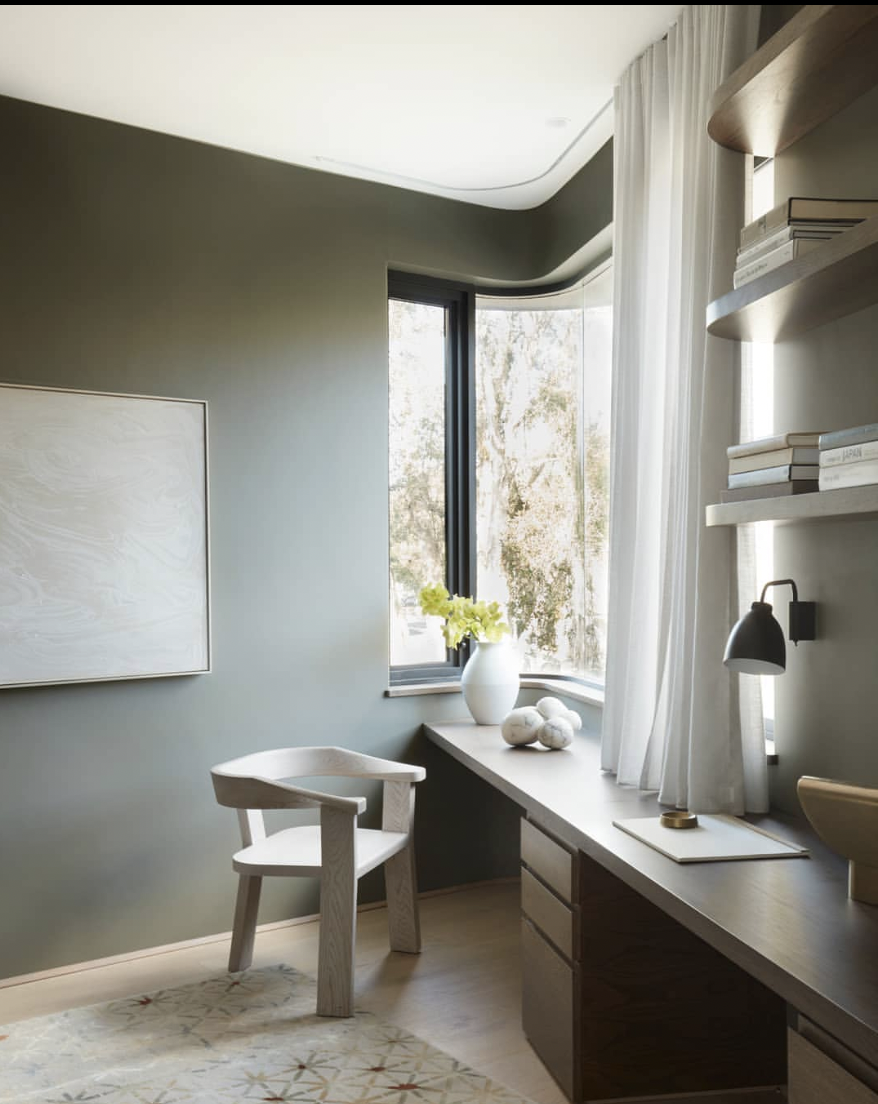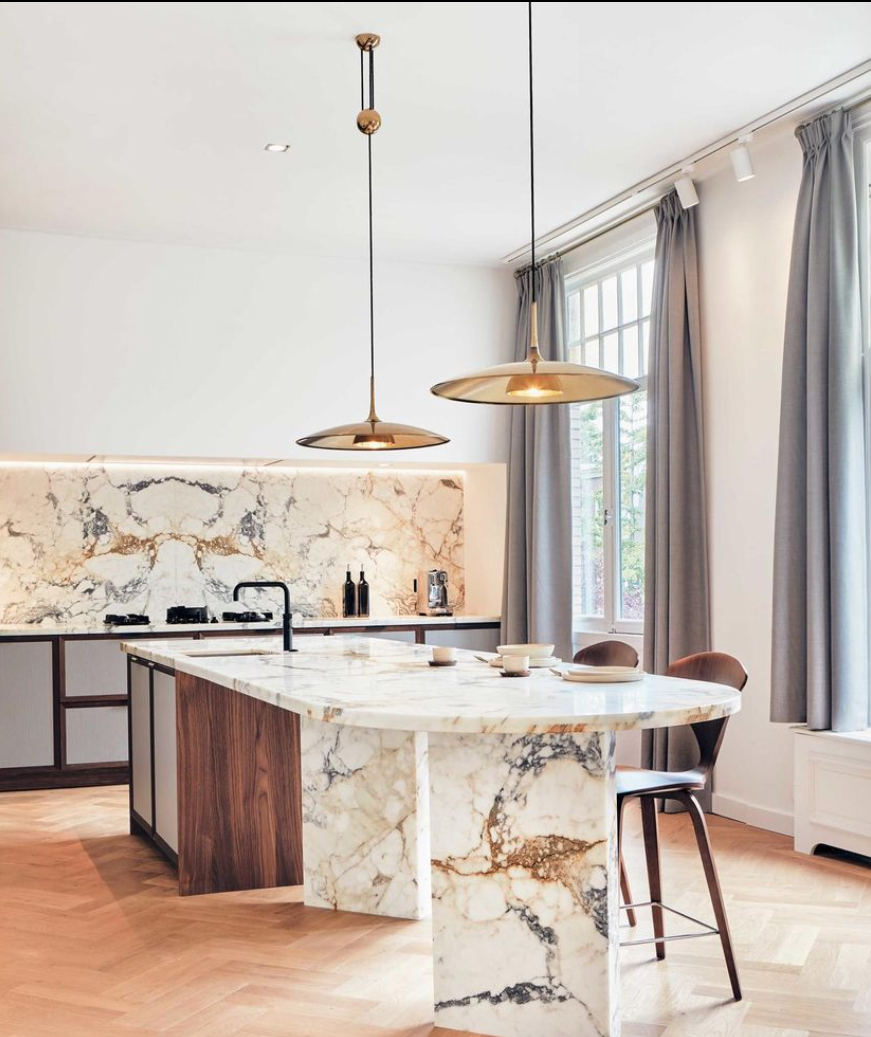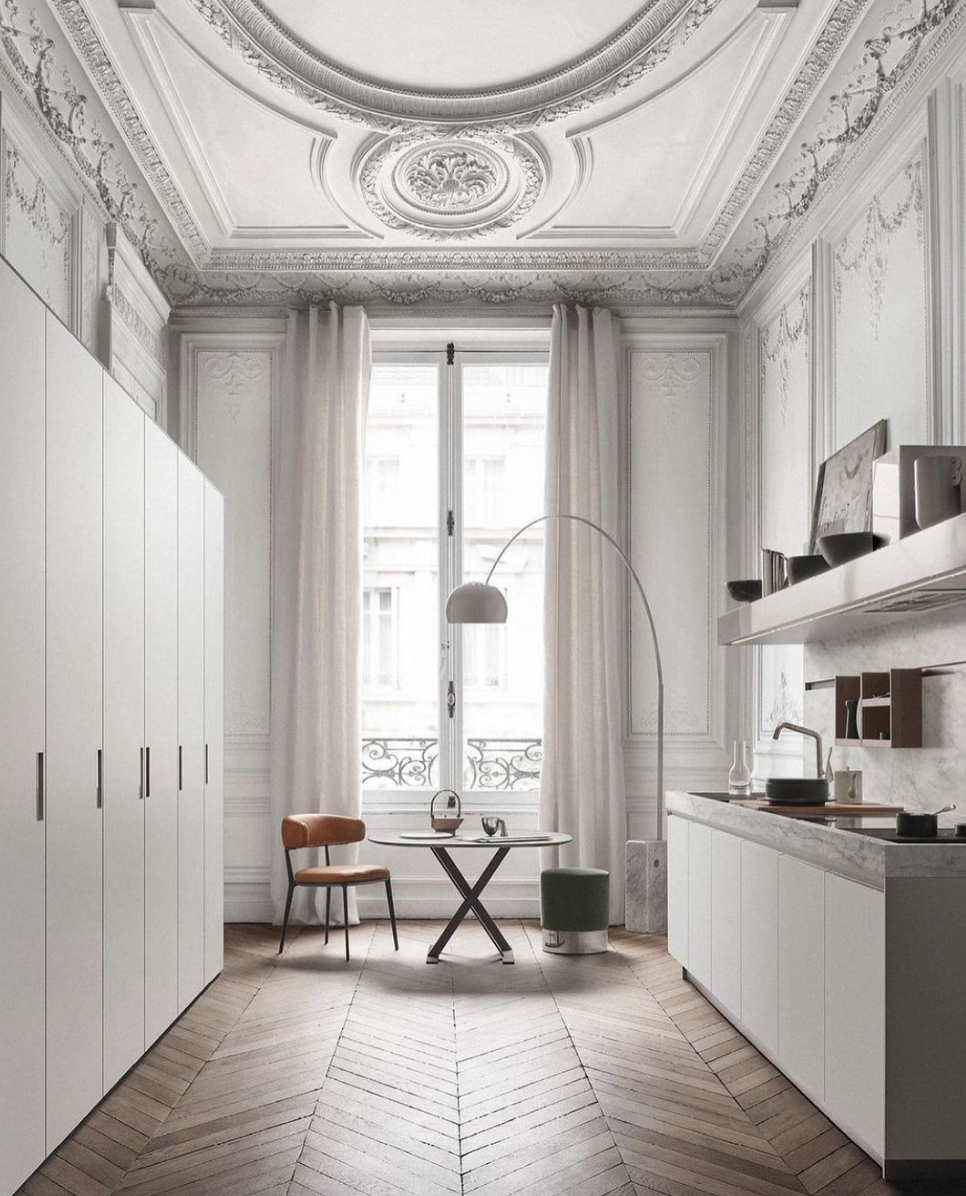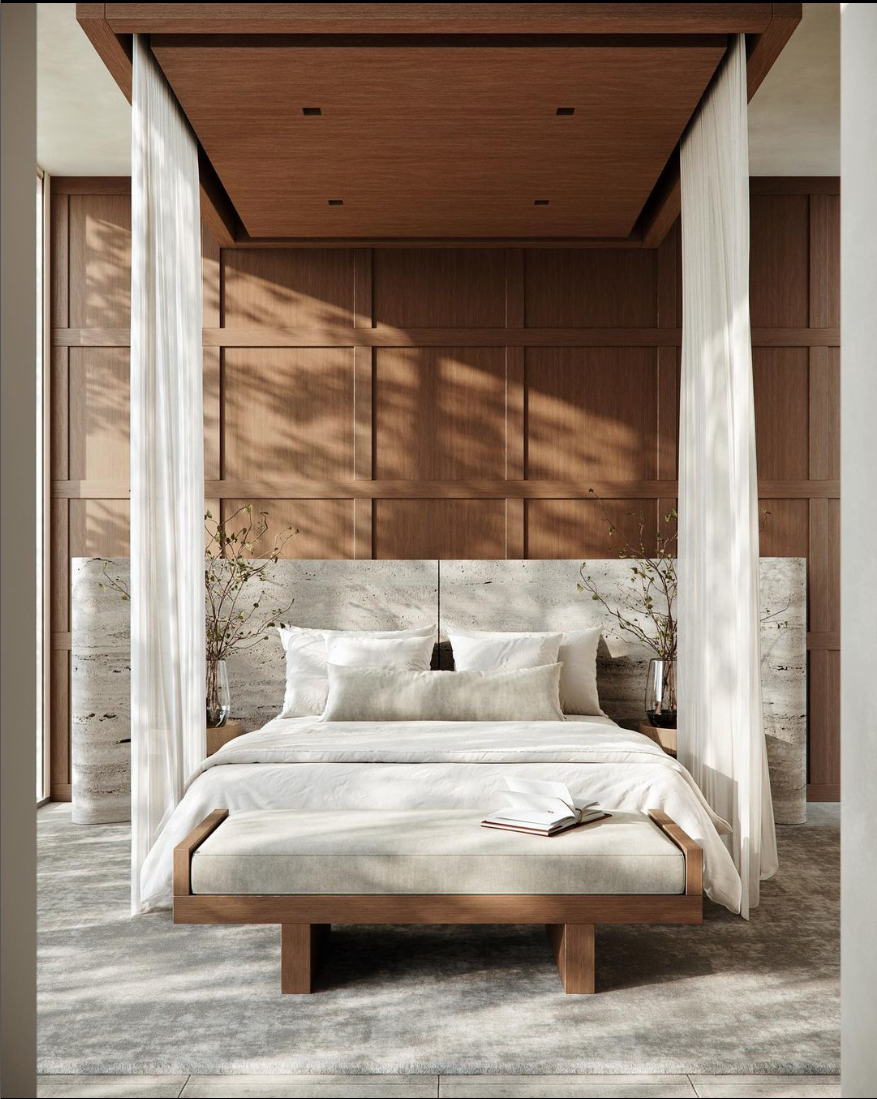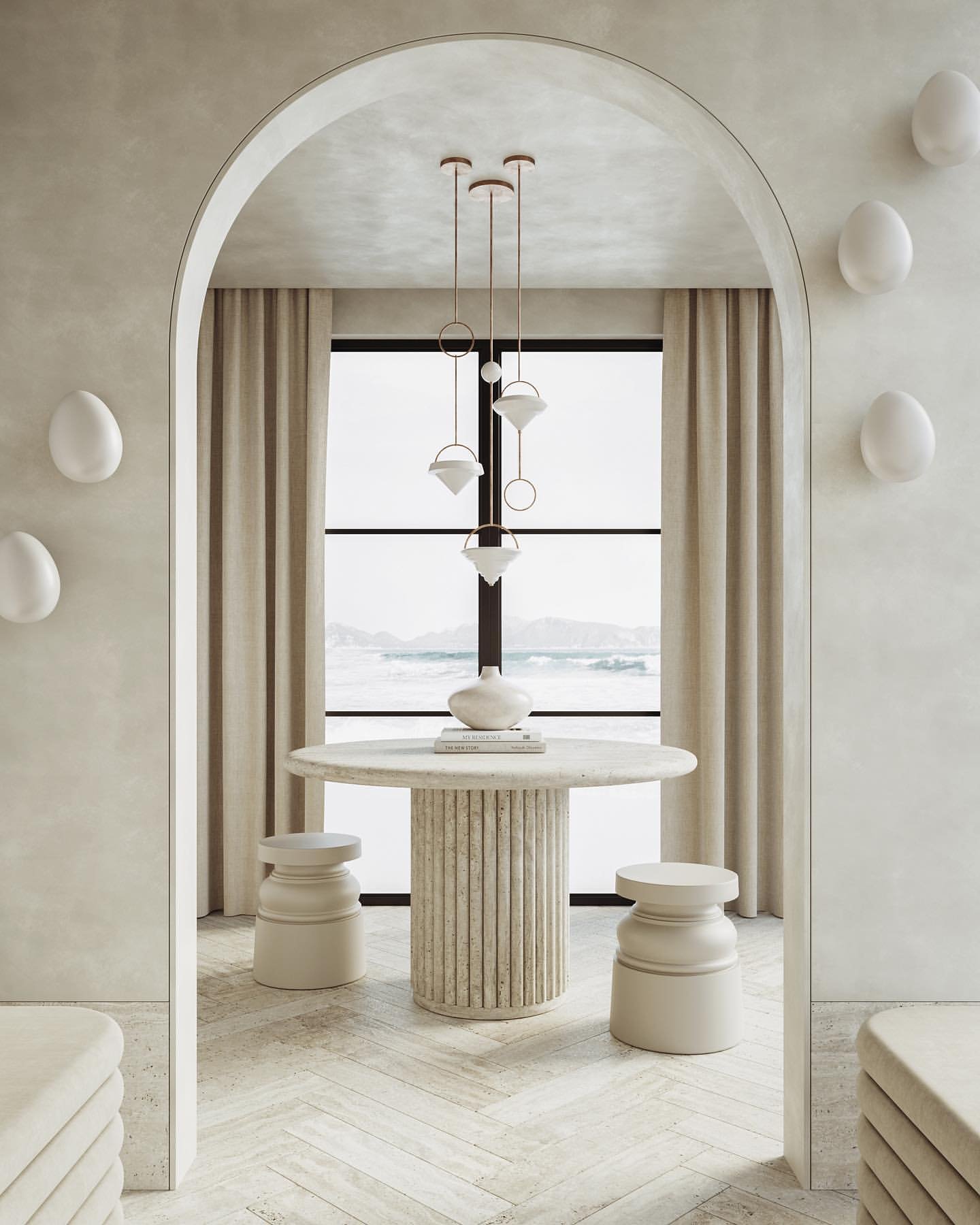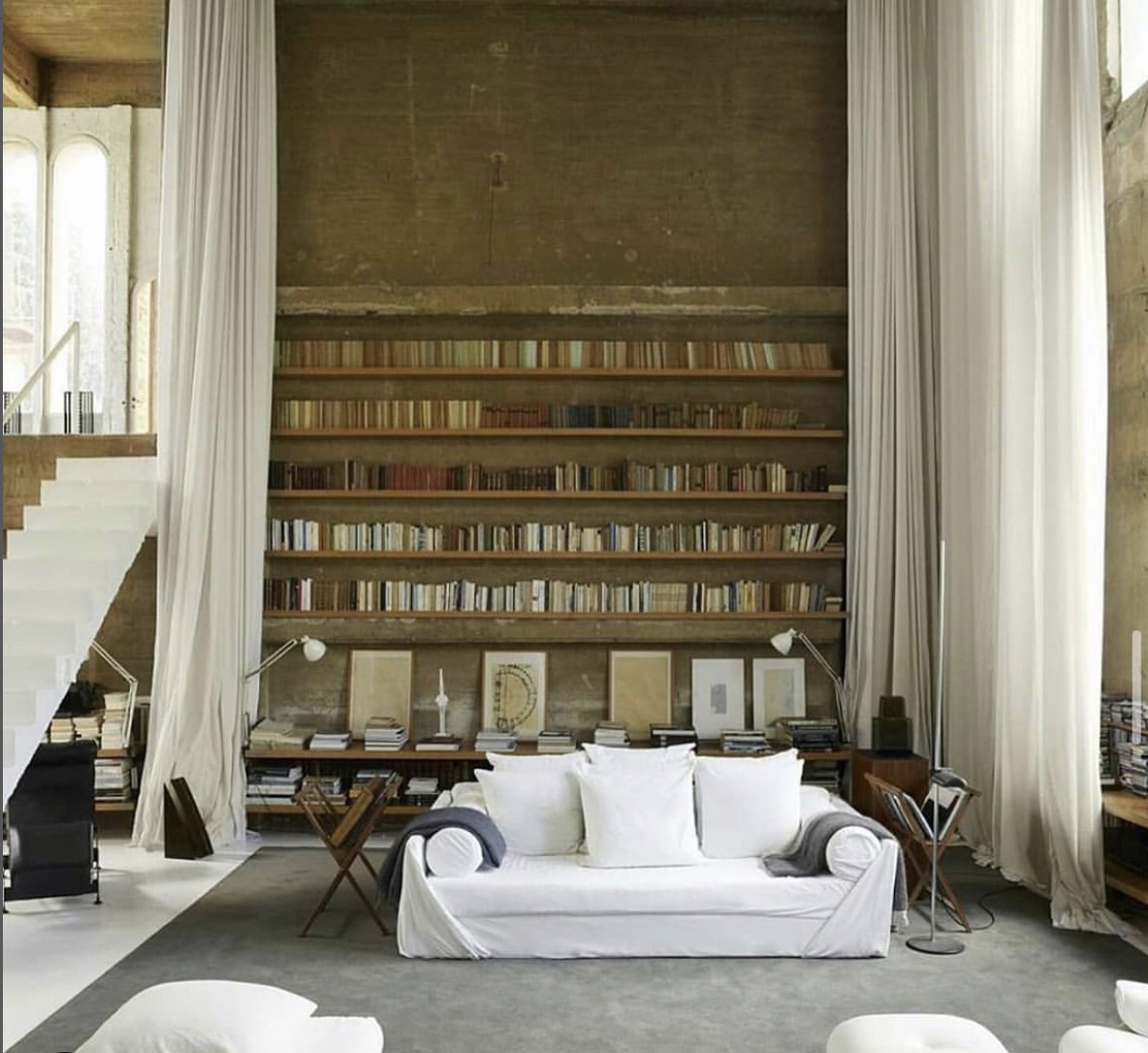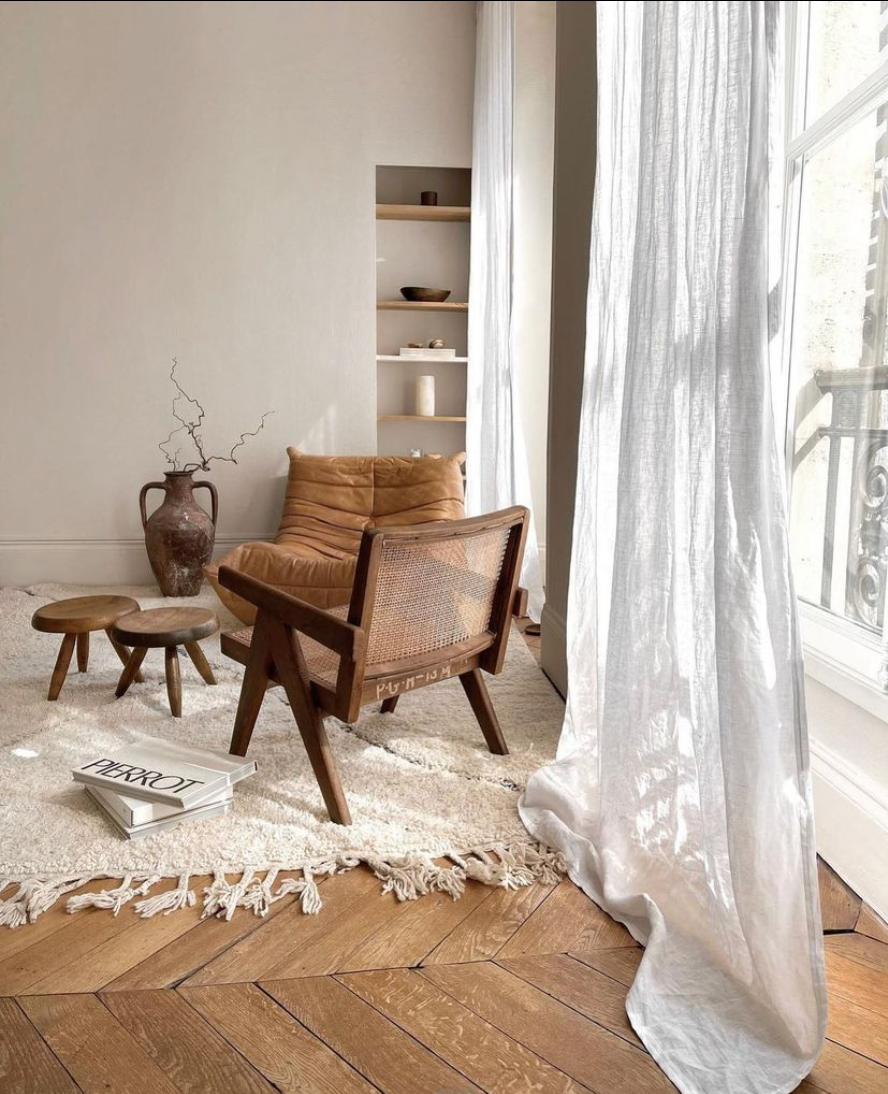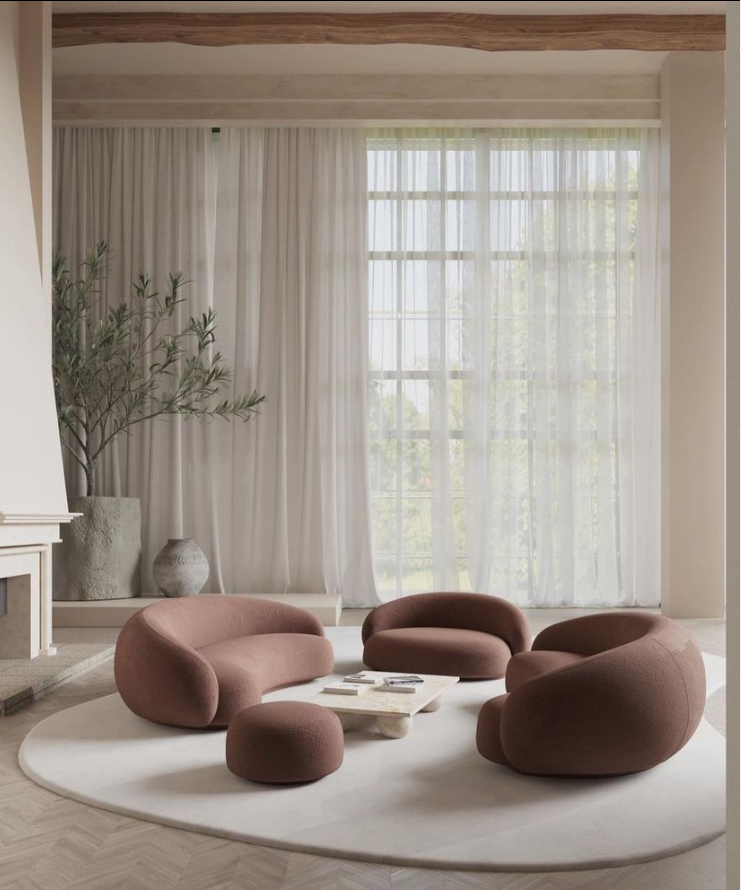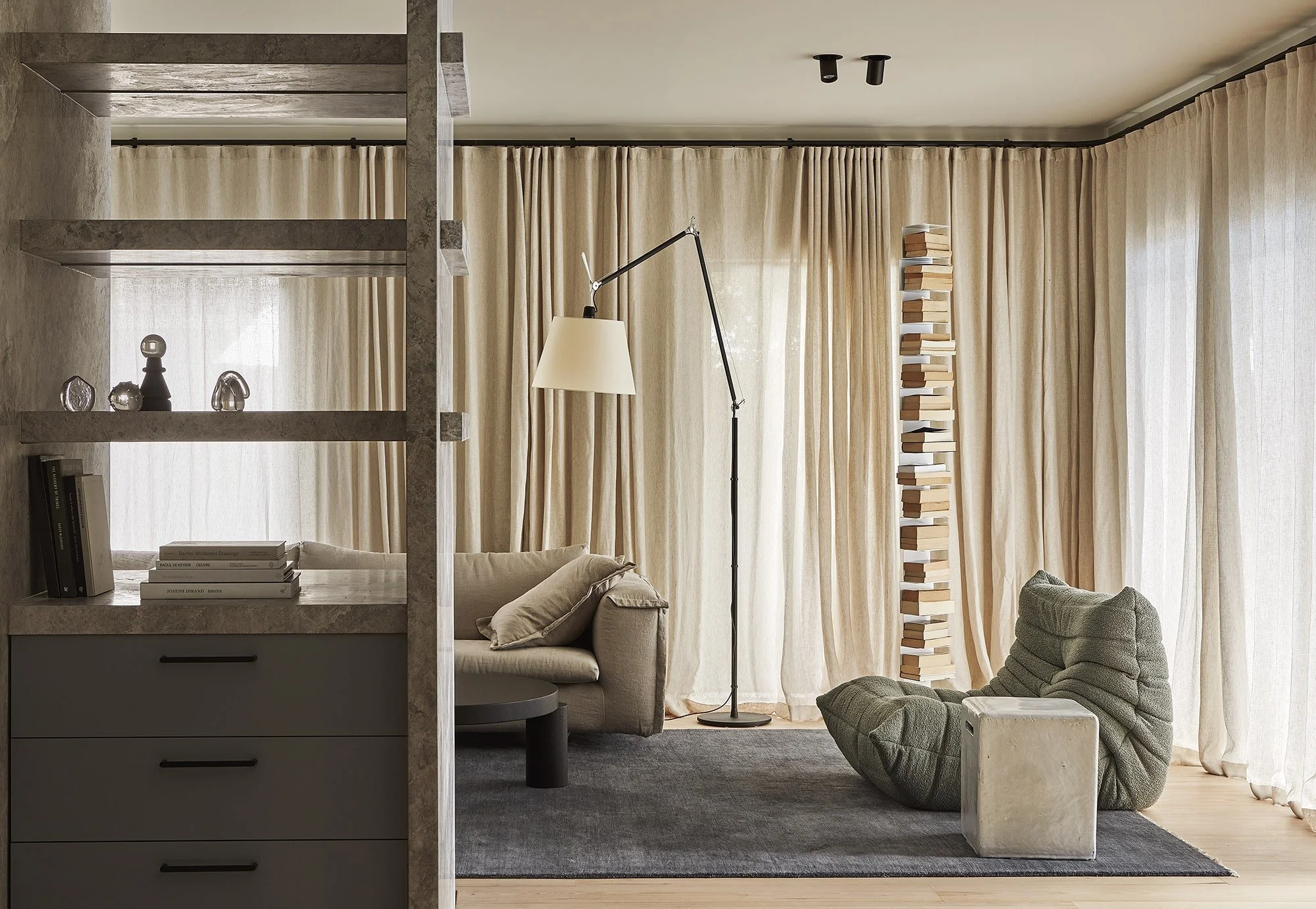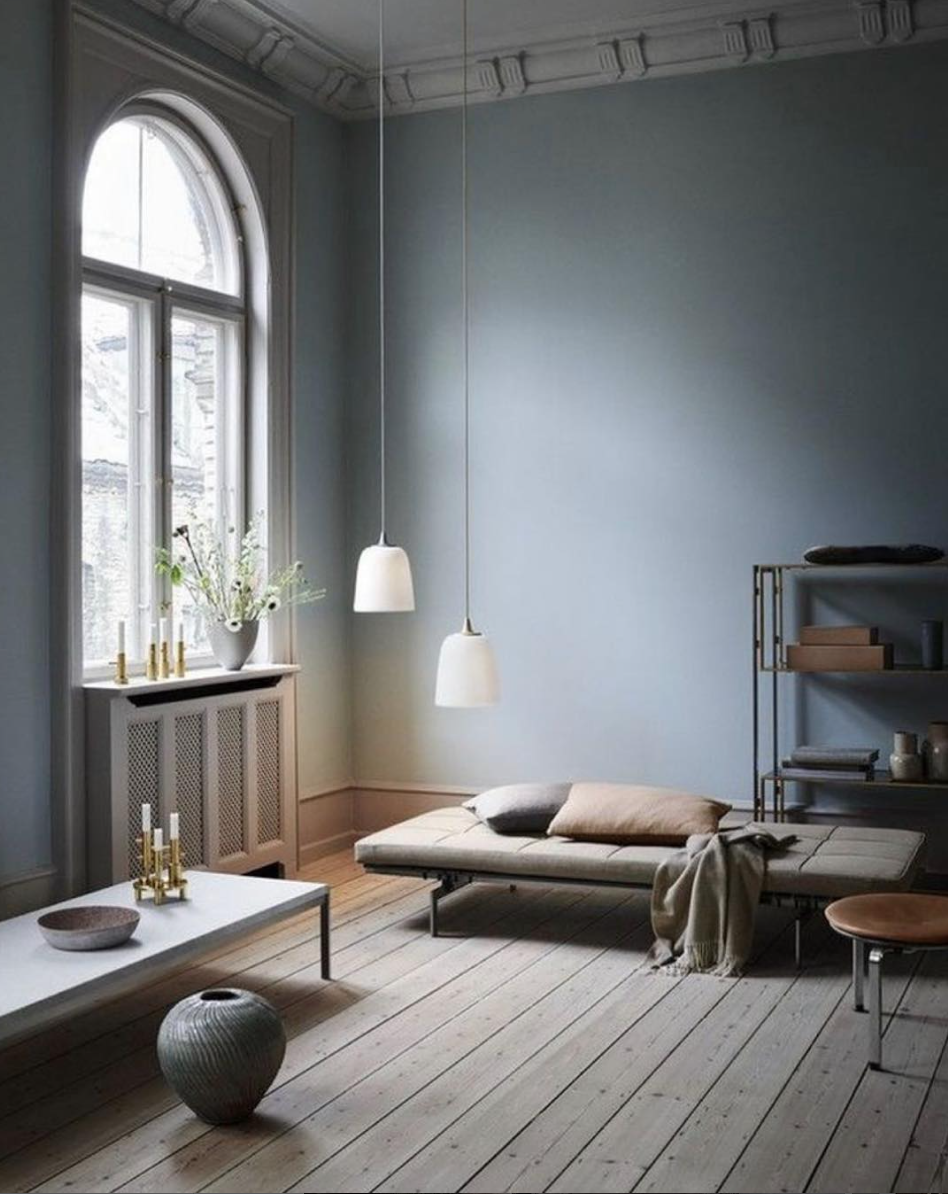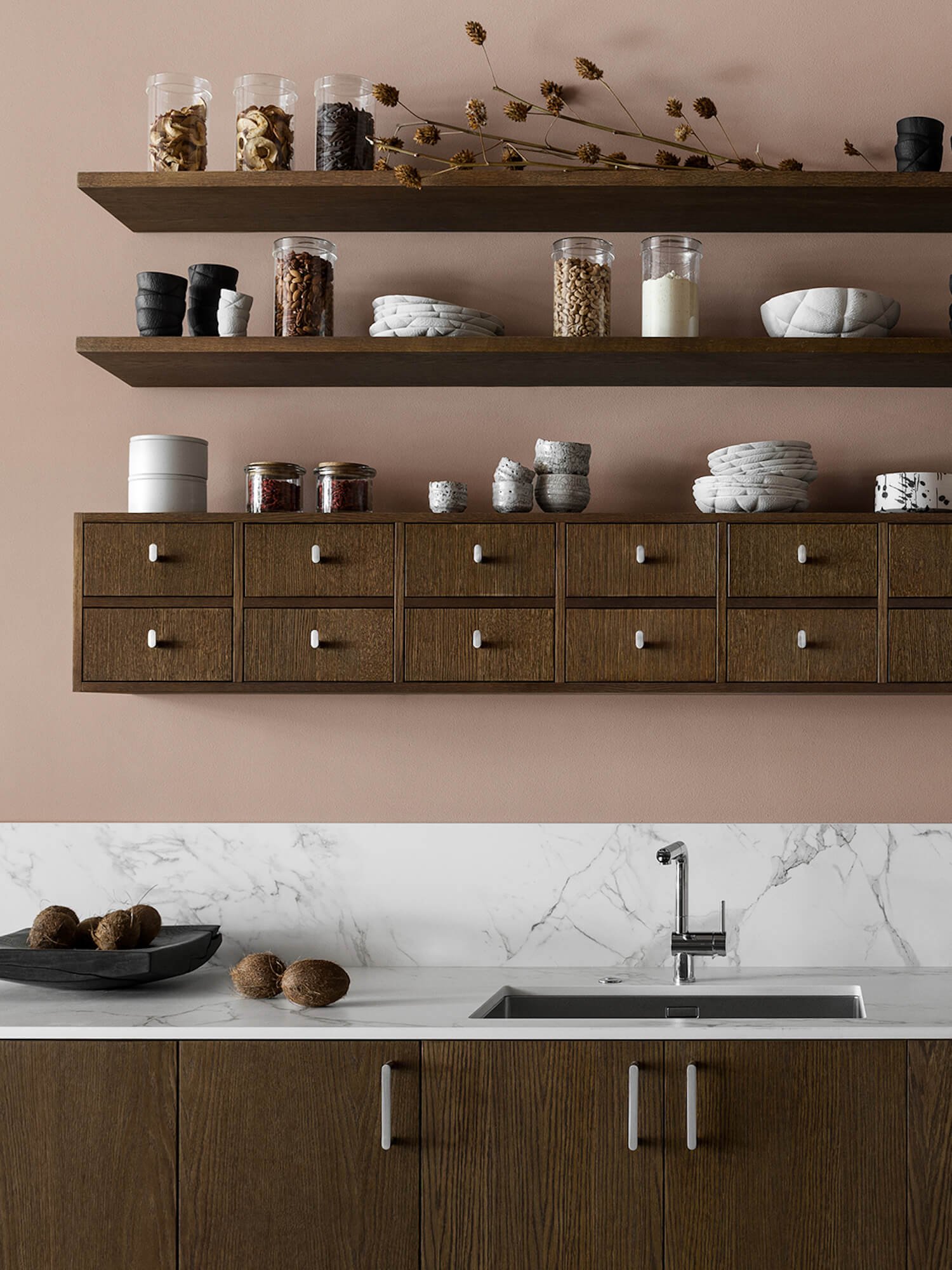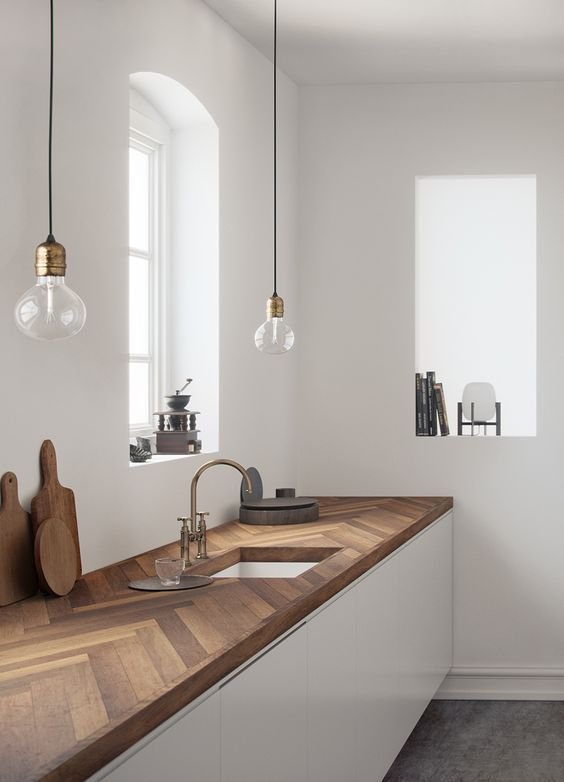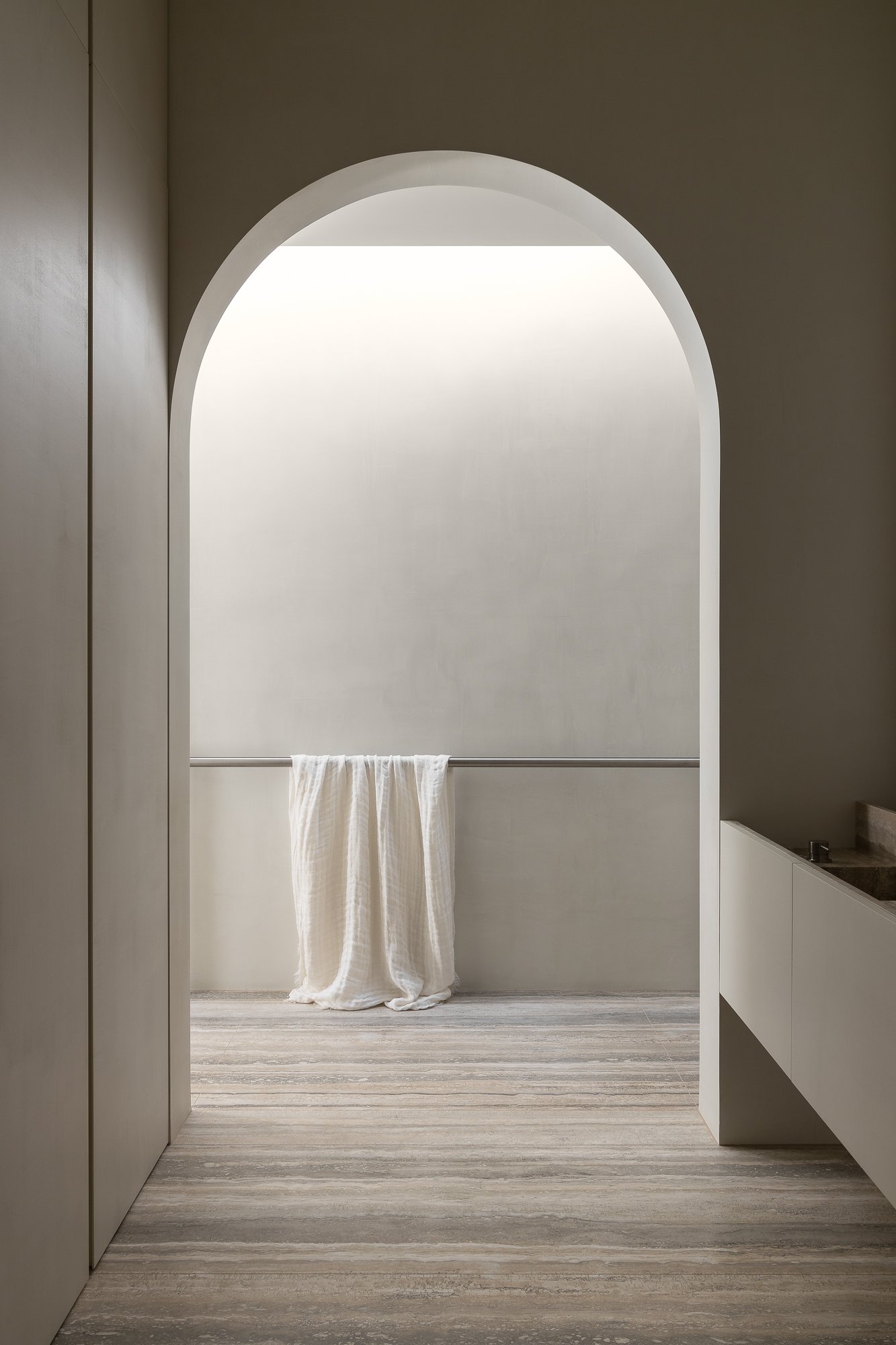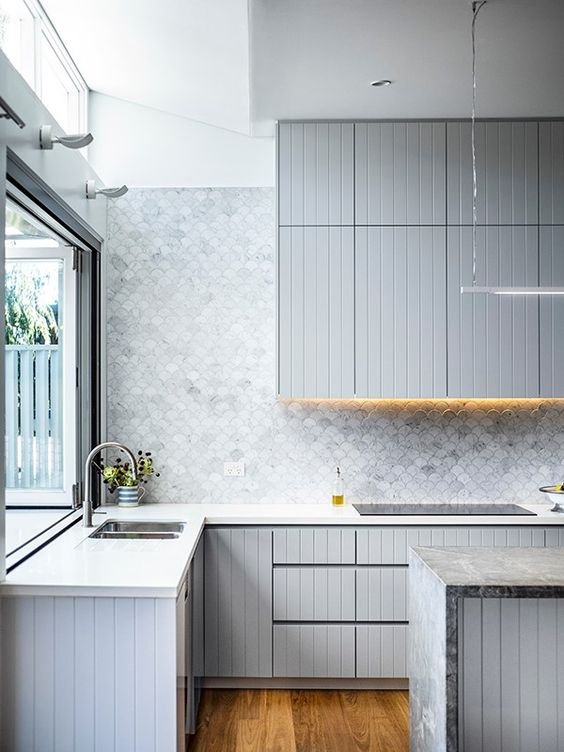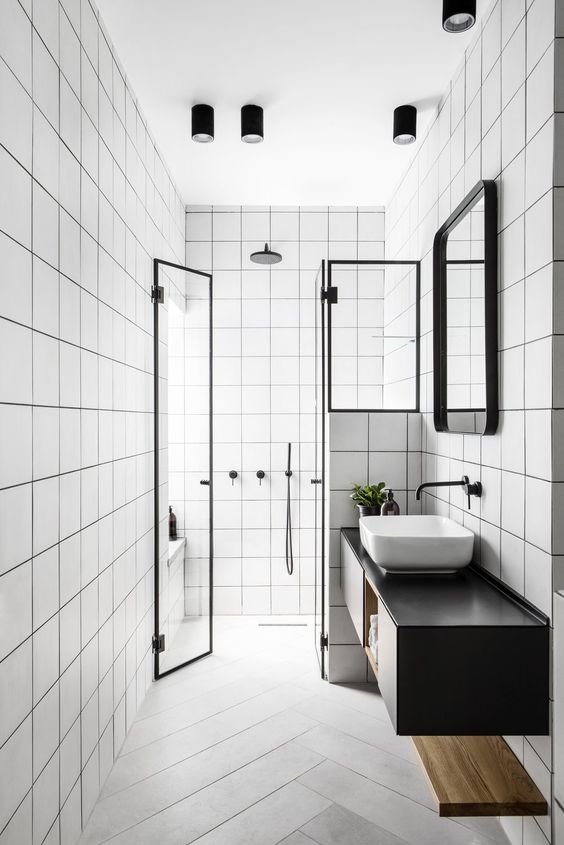THE CURTAIN CONUNDRUM - How To Choose The Right Curtain Lengths.
Picking the perfect curtain size for your windows is a big deal when it comes to sprucing up your interior design game. Curtains serve practical functions like keeping nosy neighbors at bay, adjusting the light levels, and bringing major style points to elevate your interiors. With countless options to choose from, it's crucial to wrap our heads around the different curtain sizes available so that we can find the ultimate fit for your space. By getting a handle on the various sizes and exploring our options, we'll nail that effortlessly cool and professional look for your windows.
Source Via The Local Project
What Is The Standard Curtain Size?
Ready-made curtains typically come in three standard widths, 44 inches, 66 inches, and 90 inches. Meanwhile, their lengths typically range from 63 inches to 108 inches, with other popular sizes being 84 inches, 96 inches, and 108 inches. But remember that these sizes usually refer to individual panels, and we'd need to double-check if they fit our window or door requirements.
To get the best results for our home, we should also consider factors such as window size, the correct curtain length, rod placement, and the type of curtain heading. Paying attention to these details can help us achieve the desired look and functionality we want from our curtains.
Understanding Curtain Sizes
STANDARD CURTAIN LENGTHS
When it comes to curtain sizes, there's a general range of standard sizes available in stores and online. The most common widths for curtain panels are usually around 48 inches. However, the length of the curtains can vary depending on your desired look and the height of your windows. Typically, you'll find curtains available in the following lengths:
63 inches
84 inches
96 inches
108 inches
120 inches
Keep in mind that these are just the standard options, and you can always have curtains custom-made if you need something different. It's also important to note that the width of your curtain rod will impact the final look of your window treatments. A good rule of thumb is to choose curtain widths that are at least two to three times the width of the curtain rod.
Window Size Chart
Here's a simple size chart to help you get a better idea of the standard curtain sizes and how they might work for your window size:
Smaller windows or café-style curtains 84 inches
Standard window sizes 96 inches
Taller windows or high ceilings 108 inches
Floor-to-ceiling windows 120 inches
Extra tall windows or dramatic effect
To determine the best length and width for your curtains, start by measuring the height and width of your window. Then, decide on your desired style and fullness, and consider any additional height needed for hardware like curtain rods. Once you've got all your curtain measurements down, you can refer to this size chart to find the best fit for your window treatments.Measuring Windows For Perfect Curtains
TIPS FOR ACCURATE MEASUREMENTS
Measuring for curtains is a simple process that involves determining the curtain rod's height and width. Here are the steps to get accurate measurements:
Curtain Rod Width: Measure the width of your window or the area you want the curtains to cover. If you prefer a more traditional look, add a few inches on each side for additional coverage. For a modern aesthetic, you can choose to have the curtains slightly wider than the window frame. This measurement will give you the desired width of your curtain rod.
Curtain Height: Decide where you want your curtains to start and end. For a standard look, measure from the top of the curtain rod to a few inches below the window sill. If you prefer floor-length curtains, measure from the top of the rod to the floor. For an elegant puddle effect, add a few extra inches to the length. Ensure that you measure from the appropriate starting point to the desired endpoint.
Fullness: To achieve a fuller appearance, multiply the curtain rod width by a factor of 1.5 to 2.5. This calculation will give you the total width of fabric you'll need for the curtains. Remember to consider the desired amount of gathering or pleating when determining the fullness factor.
Hemming: If you prefer your curtains to have a specific length, add the desired hem allowance to your height measurement. Typically, a hem allowance of 1 to 4 inches is added depending on personal preference and the style of the curtains
Image Via Alexander Design
Different Curtain Length Options
Here are four types of curtain lengths, each creating a different look and feel in a room.
SILL LENGTH
Windowsill length curtains are the shortest of drapery lengths. They're a casual and relaxed choice perfect for smaller spaces. These drapes sit 1/2" below the window sill. Use them in small elevated windows and windows above heaters, counters, or furniture that would block full-length drapes. We especially like sill curtain lengths for kitchen and bathroom windows.
APRON LENGTH
A longer curtain length, hanging 1 inch or more below the bottom of the window apron. Although they aren't as popular as they are used, apron length curtains won't accumulate dust or dirt on the floor, and they'll be easy to open and close. They're ideal for windows where radiators or furniture would block full-length curtains, such as built-in desks. Apron curtain lengths have the potential to appear too short if something prevents you from using floor-length curtains, such as a window seat. Honestly, not our favorite choice. We recommend utilizing them only if necessary.
FLOOR LENGTH CURTAINS
For a formal and elegant look in bedrooms, dining rooms, and living rooms, consider floor length curtains that hang from around the window frame all the way to the floor. The length of these drapes depends on how high you hang the curtain rod, but 84-inch and 96-inch curtains are popular choices for this style, as they graze the floor with a subtle touch. Opting for floor-length curtains that do not touch the floor has its advantages. They maintain a straight and clean appearance, as they don't come into contact with the ground. This curtain length is commonly used in high-traffic areas like the living room, offering both practicality and aesthetic appeal. In fact, it's the most commonly chosen drape length due to its versatility and attractiveness.
PUDDLE LENGTH OR POOLING LENGTH
If you’re aiming for a romantic and luxurious look, puddle length curtains are our go-to choice. These curtains fall about 5 to 8 inches extra on the floor, creating a beautiful, lush puddling effect. Puddling length linen or velvet curtains are simply breathtaking and work best in spaces with high ceilings where we want to make a statement. This drop-dead gorgeous look is best saved for formal spaces such as dining rooms, bedrooms, or living rooms where there isn't much foot traffic. For most homes with average ceilings, the standard 108-inch length will work for puddling, but you can sometimes find ready-made curtains up to 144 inches long.
Curtain Styles and Materials
BLACKOUT CURTAINS
When it comes to choosing the perfect curtains for our room, blackout curtains are a must-have for us GATHERAUS gals in the bedroom or where you need some extra shade and privacy. These curtains are designed with thick, opaque materials like velvet that effectively block out sunlight and help maintain a consistent room temperature. Or you can opt for custom curtains with a blackout lining.
SHEER CURTAINS
Soft and dreamy, we adore sheer curtains. These curtains allow natural light to filter through, giving our room a bright and airy feel. Made from lightweight, translucent fabrics like linen, sheers are a versatile choice that can be layered with other window treatments for added texture and depth.
Image Via The Local Project
PATTERNS AND TEXTURES
When it comes to curtains, choosing fabrics with a timeless appeal is important. Opting for versatile neutrals that can easily complement any wall color is smart for achieving a modern aesthetic. Patterns and textures are key in elevating your design, bringing a sense of balance and unity to your room. By incorporating patterns and textures, you can effortlessly combine colors and create a cohesive and stylish look.
Vertical or horizontal stripes can create an illusion of height or width. They are a classic choice that never goes out of style.
Florals: Embracing the beauty of nature, floral patterns gracefully bridge the gap between traditional and modern styles. They infuse a refreshing touch into our space.
Geometric: For those seeking a contemporary and bold statement, geometric patterns are the way to go. They add a modern edge and a pop of personality.
Textured fabrics: To indulge in a luxurious and tactile experience, consider textured materials like velvet or linen. These fabrics bring depth and richness to our curtains, making them feel utterly indulgent.
Curtain Rods And Fullness
CHOOSING THE RIGHT ROD
When it comes to curtain rods, the size and type really matter. Quite a few options are available, depending on the type of curtains you have and the window size. For smaller windows, 24 to 48-inch curtain rods are suitable, while regular-sized windows might require rods ranging from 48 to 84 inches. Keep in mind that adjustable-length rods are also available, offering more flexibility if you're unsure about the exact size needed.
To choose the right curtain rod, first measure the width of your window and add 4-6 inches on each side to account for the hardware. This will help ensure that your curtains fully cover the entire window, for privacy, light control, and optimal heat retention or insulation. UNDERSTANDING CURTAIN FULLNESS
Getting the curtain fullness just right is absolutely crucial. It's a game-changer when it comes to both the looks and functionality of your curtains. Fullness refers to how much fabric is used compared to the width of the rod. As a general rule of thumb, design experts recommend that your curtain width should be at least two to three times the length of the curtain rod. This extra fabric creates a beautiful sense of fullness, adding depth and dimension to your windows. Plus, it gives you better control over light and privacy.
CURTAIN FULNESS OPTIONS
Flat fullness (1x rod width): This option creates a sleek panel-like look, a modern, cost-effective option with minimal fabric.
Standard fullness (2x rod width): The most common choice, balancing aesthetics, privacy, and light control.
Luxe fullness (2.5x - 3x rod width): Provides a more luxurious feel, with abundant fabric for better sound absorption and insulation.
Final Thoughts
It is normal for curtains to touch the floor. Some styles even need more length to produce a certain look. Using any of the curtain length styles is fine as long as it enhances the beauty of your home.
GATHERAUS - where your dream home décor comes to life with endless style inspiration. Scroll and click those links below and watch your living space go from drab to fab in a snap.


